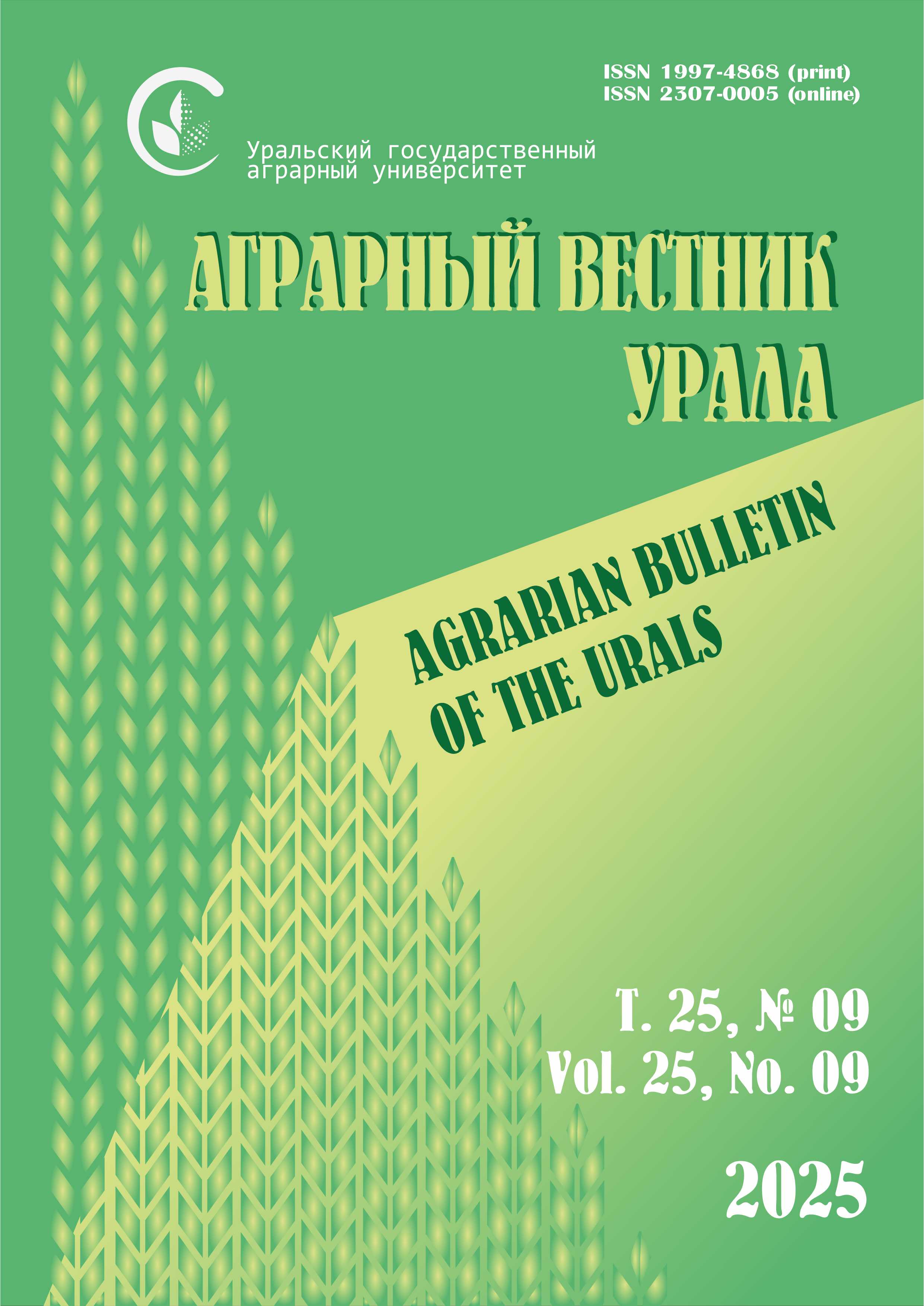Authors:
E. A. Yildirim,
L. A. Ilyina,
V. A. Filippova,
K. A. Kalitkina,
A. V. Dubrovin
Saint Petersburg State Agricultural University, Saint Petersburg, Pushkin, Russia
BIOTROF LLC, Saint Petersburg, Russia
E-mail: This email address is being protected from spambots. You need JavaScript enabled to view it.
Abstract. Understanding the relationships between the microbiome of the digestive system, the use of probiotic supplements and zootechnical indicators in cows is the key to developing new strategies to increase milk yields. Purpose of research to study the composition of the microflora of the digestive system chyme and dairy productivity of cows under the influence of a complex biological preparation. Research methods. The experiment was carried out on of cows of black-and-white holsteinized. Groups were formed: control group I (who received the main ration (MR)) and experimental group II (who received MR and the “AntiKlos” feed additive). The bacterial community of the scar was evaluated by NGS-sequencing, the intestinal microflora, litter and feed were evaluated using real-time PCR. Results showed that the use of the “AntiKlos” feed additive on livestock allowed to increase the average daily milk yield to 7.5 kg compared with control I (P = 0.05). The bacteria Bacteroidetes were the most abundantly represented (P ≤ 0.05) in the rumen – from 20.9 ± 4.36 and up to 55.3 ± 6.74 %. It was shown for the first time that under the influence of the introduction of the “AntiKlos” feed additive into the diet, there was also a 16.1-fold decrease in Fusobacteria phylum bacteria in experimental group II compared with control I (P < 0.05). In addition, the use of the “AntiKlos” feed additive led to the complete disappearance of such species as Streptococcus caprae, S. didelphis, Mycoplasma conjunctivae in the rumen, among which opportunistic and pathogenic forms are often found, which is the scientific novelty of the study. Similar bacterial taxa were found in the food from the feed table, litter and rectum of almost all the dairy cows studied. In the rectal chyme of cows of the experimental group, the number of taxa such as Clostridium spp., Enterobacteriaceae and Staphylococcus spp. decreased in comparison with control I (P ≤ 0.05). Thus it is necessary to pay attention to increasing the efficiency of animal husbandry by regulating the microbiomes of cows, as well as the microflora of feed and housing sites.
Keywords: microbiome, scar, intestine, NGS-sequencing, AntiKlos, quantitative PCR, cattle
For citation: Yildirim E. A., Ilyina L. A., Filippova V. A., Kalitkina K. A., DubrovinA. V. Sostav mikroflory khimusa pishchevaritel’noy sistemy i molochnaya produktivnost’ korov v period razdoya pod vliyaniyem kompleksnogo biopreparata [The composition of the microflora of the digestive system chyme and dairy productivity of cows during the milking period under the influence of a complex biological preparation] // Agrarian Bulletin of the Urals. 2024. Vol. 24, No. 01. Pp. 46‒58. DOI: 10.32417/1997-4868-2024-24-01-46-58. (In Russian.)
Download the full text of the article












